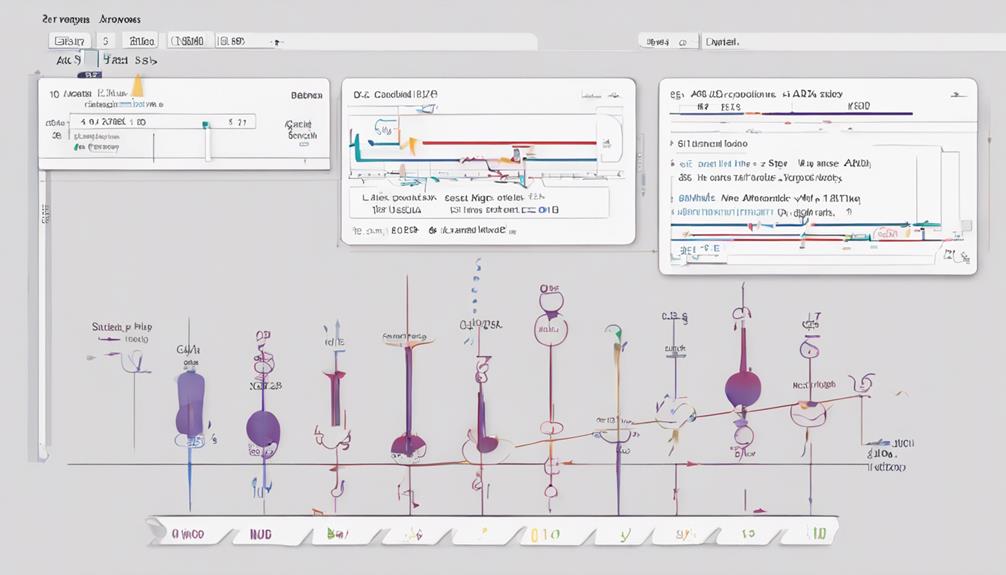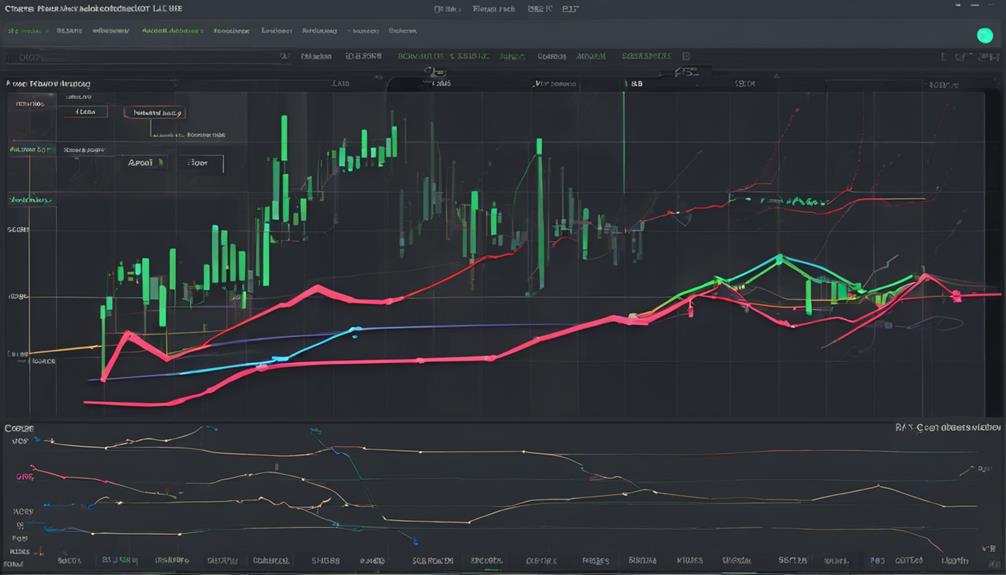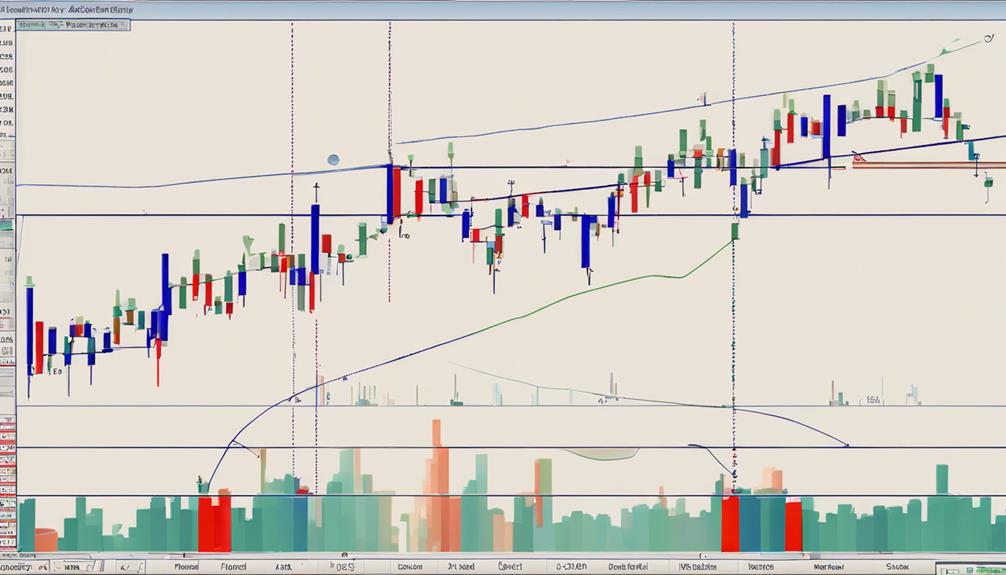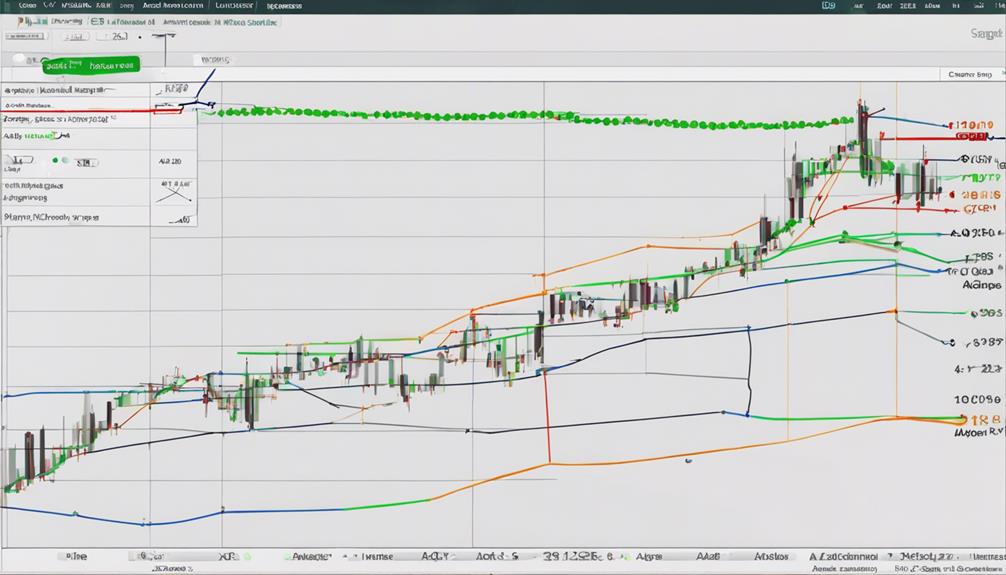Exploring the foundational aspects of the ADX technical indicator serves as a fundamental step in mastering its application within the realm of technical analysis.
From understanding the concept behind ADX to interpreting its values for trend strength and incorporating it into trading strategies, a systematic breakdown of its step-by-step basics can provide traders with a solid framework for utilizing this tool effectively in the dynamic world of financial markets.
By unraveling the intricacies of ADX through a structured approach, traders can unlock its full potential and gain deeper insights into market trends and potential trading opportunities.
Understanding the ADX Concept
Exploring the ADX concept reveals its fundamental role in evaluating trend strength within financial markets. The Average Directional Index (ADX), created by J. Welles Wilder in 1978, is a key component of technical trading systems.
ADX is a non-directional indicator that ranges from 0 to 100 and is often accompanied by the +DI and -DI indicators. This tool calculates trend strength by considering price range expansion and the true range of an asset. By analyzing these factors, ADX assists traders in identifying trend direction, recognizing ranging markets, and determining optimal entry and exit points.
The +DI and -DI indicators complement ADX by showing the strength of positive and negative price movements, respectively. Together, these components provide valuable insights into market dynamics, allowing traders to make informed decisions based on the prevailing trend strength.
Understanding the ADX concept is essential for traders seeking to enhance their technical analysis skills and improve their overall trading strategies.
Calculating the ADX Value

Understanding how the ADX value is calculated involves a meticulous process of analyzing moving averages of price range expansion, positive directional movement (+DM), negative directional movement (-DM), and true range (TR) data over a specified period. The ADX formula includes the smoothing technique applied to 14-period averages of +DM, -DM, and TR to compute the final ADX value accurately.
By incorporating price range expansion data into its calculation, the ADX indicator provides a reliable assessment of trend strength. The calculation of ADX requires determining the average of price range expansion, +DM, -DM, and TR values over a specified period, followed by applying the smoothing technique to these 14-period averages.
This systematic approach enables traders and analysts to gauge the strength of a trend based on the ADX value, helping them make informed decisions when trading or investing.
Interpreting ADX for Trend Strength

Analyzing ADX values provides traders with valuable insights into the strength of market trends, aiding in strategic decision-making for trading and investment purposes. The average directional index (ADX) offers a clear indication of trend strength, with values above 25 signaling a strong trend suitable for trend-trading strategies.
Conversely, a reading below 20 suggests a weak or absent trend in the market, indicating a challenging environment for trend-following approaches. ADX values falling between 25-50 represent varying degrees of trend strength, offering traders a nuanced view of the market conditions. Peaks in the ADX line visually depict changes in trend momentum, providing further clues for traders looking to gauge the market's directional bias.
Additionally, ADX can reveal momentum divergence, notifying traders of potential shifts in trend direction that may impact trading decisions. Understanding these ADX dynamics can empower traders to navigate both strong and weak trends effectively, enhancing their overall trading performance.
Implementing ADX in Trading Strategies

To further leverage the insights gained from analyzing ADX values for trend strength, traders can strategically implement the ADX indicator within their trading strategies to confirm trend validity and enhance decision-making processes.
By using the average directional index (ADX) in conjunction with other indicators such as moving averages, traders can enhance their trading signals and make more informed decisions. Waiting for the ADX to rise above 25 can validate trend direction, offering more accurate trading opportunities.
Additionally, incorporating ADX crossovers with the Directional Movement Index (+DI and -DI lines) can provide signals for potential trend changes and trade entries. Moreover, combining ADX with price action analysis can improve entry and exit timing, increasing the effectiveness of trading strategies.
Analyzing ADX Advantages and Limitations

When evaluating the ADX indicator, it is crucial to consider both its advantages and limitations to make informed trading decisions.
The average directional index (ADX) is a key technical tool that quantifies trend strength, making it advantageous for traders looking to gauge the strength of a trend accurately. It provides clear signals for trend-following strategies, aiding in identifying potentially profitable trading opportunities.
However, ADX has limitations, such as potential false signals during low volatility periods. In such cases, traders may need confirmation from other indicators to validate signals. Additionally, ADX may struggle in sideways markets where trend strength is ambiguous, requiring supplementary analysis.
Understanding the average directional index's strengths and weaknesses is essential for effective trend analysis and trade execution. By acknowledging both the advantages and limitations of ADX, traders can enhance their ability to interpret market trends and make more strategic trading decisions.
How Can I Use the ADX Technical Indicator for Effective Analysis?
When it comes to effective analysis in trading, using the essential ADX technical analysis can be incredibly beneficial. By understanding how to interpret the ADX technical indicator, traders can gain valuable insights into the strength of a trend and make more informed decisions about when to enter or exit the market.
Frequently Asked Questions
How Do You Use ADX Technical Indicator?
The ADX technical indicator is utilized to gauge trend strength without specifying direction. Traders apply it alongside +DI and -DI lines for trend assessment. ADX readings exceeding 25 imply a robust trend, aiding in identifying market conditions and potential trend shifts.
How Do You Calculate ADX Step by Step?
Calculating the ADX involves smoothing techniques applied to the 14-period averages of +DI, -DI, and True Range. By deriving the Average Directional Index from these calculations, traders can gauge the strength of a trend through price range expansion.
What Is the Best Setting for the ADX Indicator?
The optimal setting for the ADX indicator is the default 14-period setup, as recommended by its creator. This timeframe strikes a balance between capturing trend strength effectively and providing a comprehensive view over a reasonable duration.
What Are the 3 Lines in ADX Indicator?
The three lines in the ADX indicator are the Average Directional Index (ADX), Plus Directional Indicator (+DI), and Minus Directional Indicator (-DI). These components collectively assess trend strength, positive and negative price movements, aiding traders in decision-making.
Conclusion
In conclusion, the Average Directional Index (ADX) is a valuable tool for traders to measure trend strength and identify potential trend changes. By incorporating ADX into trading strategies, traders can make informed decisions based on trend momentum and validation of breakouts.
While ADX has its advantages in providing clarity on market trends, it is important to note its limitations in volatile market conditions. Like a compass guiding a ship through turbulent waters, ADX can steer traders towards profitable trading opportunities.


